- Atlanta, GA

Menu

Living benefits can be included as part of a life insurance policy or purchased separately as an additional rider.
Living benefits allow you to access a portion of your death benefit while you’re alive, specifically if you face a critical illness, chronic illness, or terminal illness.
This money can be used for medical expenses, lost income, long-term care, or anything else you need.
Living benefits may be incorporated into a life insurance policy or acquired separately as an additional rider. These benefits enable policyholders to utilize a portion of their death benefit while still living, particularly in the event of a critical, chronic, or terminal illness. The funds accessed can be allocated towards medical expenses, loss of income, long-term care, or any other necessary expenditures.
Many people think that their home or their investment portfolio is their biggest asset. In reality, their earning potential is usually their most important asset.
The benefit is designed to provide financial flexibility during challenging times.
It can alleviate the financial burden associated with serious health conditions by providing access to funds while the policyholder is still alive.
Everything from paying your mortgage to saving for a child’s college education depends on your ability to earn money from your job. The lost income from a serious illness or injury that prevents you from working can be substantial.
Sadly, half of working Americans (49%) couldn’t make it six months before financial difficulties would set in—and 11% said they would have problems immediately, according to the 2022 Insurance Barometer Study by Life Happens and LIMRA. An already unfortunate situation is often compounded by hefty medical bills that pile up on top of everyday expenses.
Financial hardship from an injury or illness could lead you to burn through your savings, sacrifice your quality of life or even lose your home.
One of the best ways to protect your future earning potential and keep you and your family on solid financial ground is through a disability insurance policy.
Disability insurance steps in to help you cover expenses; it pays you a percentage of your salary if an illness or injury prevents you from working. Depending on your policy, disability insurance covers your lost income for anywhere for a few weeks to your entire working life.
You most likely purchase auto insurance, homeowners insurance and maybe life insurance to protect yourself and the ones you love. Like each of these coverage options, disability insurance should be a part of your overall financial plan.
The main ways to get disability insurance are through your employer which has many limitations or through an insurance company that can meet your needs.
There are disability insurance policies tailored for those in specific professions, including medical professionals, as well as for those who are self-employed. Those who work for an employer may get disability insurance through their workplace, but the key is to check to see if it would be enough if something happened.
There are two main types of disability insurance:
These living benefits provide essential financial support, helping policyholders manage unexpected health issues and maintain their quality of life.
Life insurance living benefits offer policyholders significant flexibility in addressing various financial needs beyond their primary purpose. Here are some creative ways people can use these benefits:
These examples demonstrate how life insurance living benefits can be used creatively to enhance the quality of life, fulfil personal dreams, and provide financial security in various situations.
Using life insurance living benefits to support a business or business partner can be a strategic way to maintain business stability and continuity during challenging times. Here are some ways to creatively use these benefits to help a business:
By strategically utilizing life insurance living benefits, business owners can protect their enterprises, support their partners and employees, and ensure business continuity during times of personal health crises.
“We strongly believe in what we term Family Systemic Risk Management. This approach combines living benefits and tax-deferred income, ensuring that when the insured passes away, they leave behind a financial legacy.” Dallas Strickland
Keep in mind that some expenses may go down if you can’t work. These can include expenses for commuting, a professional wardrobe and meals out. Important expenses to include in this total are:
As a general rule of thumb, an individual long term disability insurance costs about 1% to 3% of your annual salary. Here are some examples.
Example: Salary $30,000 – DI yearly cost $300-$900 – monthly payment $250-$75
Example: Salary $100,000 – DI yearly cost $1,000-$2500 – monthly payments $83 – $250
Example: Salery $200,000 – DI yearly cost $2000-$6000 – monthly payments $166-$500
A con is that the professional organization may choose to stop offering the coverage at any time, which would terminate your disability insurance. You would also lose coverage if you change professions or leave the professional organization.
There are three main ways to receive disability benefits from the government:
One of the best ways to get disability insurance is to buy it on your own. This lets you get the exact amount of coverage you need and lets you compare coverage and prices from a variety of insurance companies.
Plus, you don’t need to worry about losing coverage if you change jobs or leave a particular professional organization. Your best bet is to work with a licensed insurance agent to learn about your options and get a disability insurance quote. He or she can help tailor coverage to your exact needs as well.
Get started before it’s too late! It’s a limited time offer so hurry up! Get your 10% discount today!

Simple to fully underwritten policies with all the extras that we can show you